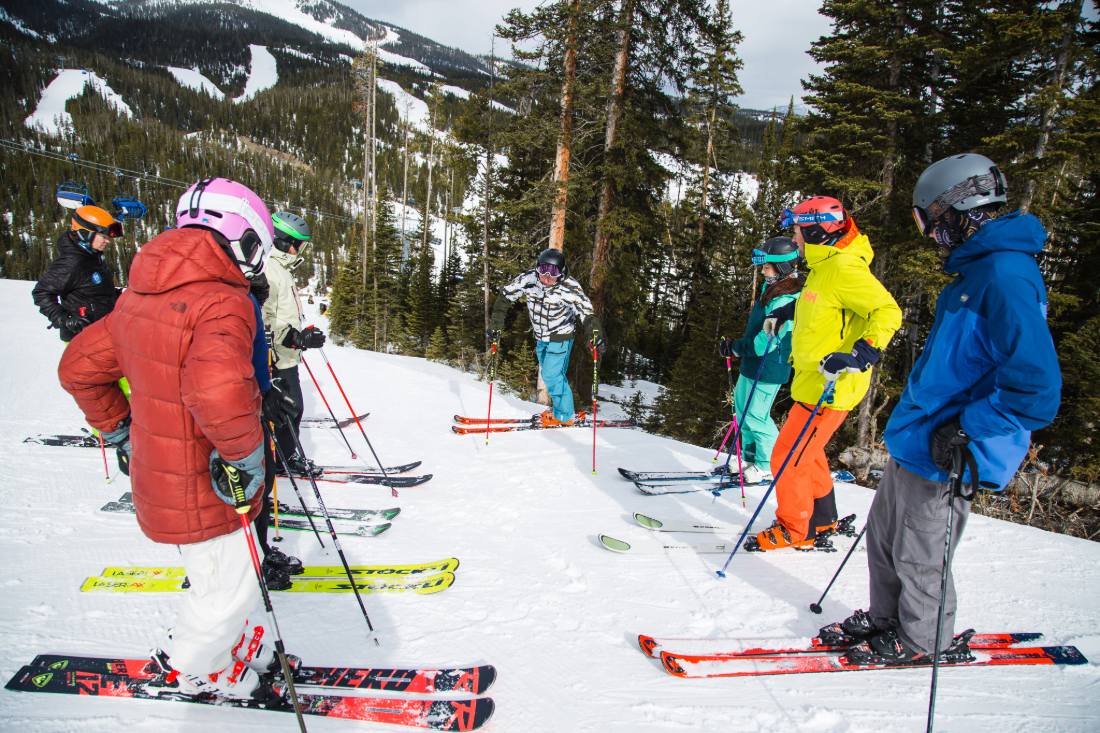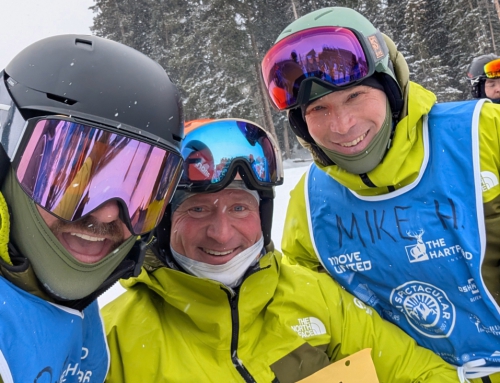32 Degrees: The Active Art of Ski Instruction
This excerpted feature, by PSIA-AASI Lead Writer Peter Kray, appears in the forthcoming Winter 2025 Issue of 32 Degrees. You can read the entire article here.
***
PSIA-AASI’s Learning ConnectionSM emphasizes that great lessons rely on the instructor’s ability to offer a blend of people skills, teaching skills, and technical skills, as well as sound decision-making. Whether students are new to skiing and riding or experts, this approach creates informative, fun, and personalized experiences that keep students engaged in the learning process, while also providing instructors with the ability to personalize each lesson to meet the needs and goals of each person they are teaching.
First introduced to the world of international instructors at Interski 2015 in Ushuaia, Argentina, the Learning Connection has been refined and perfected at Interski 2019 in Pamporovo, Bulgaria, and most recently at Interski 2023 in Levi, Finland, and has become the calling card of U.S. snowsports instruction.
Based on a standard of collaboration, adaptation, and innovation, it exemplifies the best practices of how people enjoy and improve at snowsports at every level, and in every discipline.
Which is why with such a fluid, dynamic template at hand, some accomplished instructors across the country question why some ski and snowboard teachers still rely on “canned presentations.”
“Canned presentations became more of a discussion this spring when it became apparent that even at the highest level, there are still people who are so set on their prepared progression that they can’t deviate from it to interact with and work with the other instructors or students around them,” said PSIA-AASI Director of Education & Credentialing Dave Schuiling. “Which asks the question, ‘How widespread is this practice even in Level II and Level III exams?’”
Schuiling said that to him, much of the canned presentation style is a lingering byproduct of the “old-school exam or tryout mindset where people literally are ‘presenting,’ and want to show how much they know, that they’re well-read, and to say all the right technical things.”
PSIA-AASI Education Development Manager Angelo Ross said he also thinks it’s more of a classroom lecture style of teaching with a focus on the “what and why” of skiing and snowboarding rather than the “how” and said, “The ‘how’ is what people want the most out of a skiing and snowboard lesson.”
PSIA Alpine Team alumnus and U.S. Ski and Snowboard Hall of Fame inductee Ellen Post Foster said, “In snowsports lessons, some instructors teach the same thing in the same way regardless of the students in the class. These lessons are more about the instructor’s process than meeting the needs of the students directly in front of them.”
She added that “Instructors are more successful when they create a learning environment that has personal meaning to their students. Asking students to reflect on what they understand, as well as observing their performance, provides you with insight to alter your plan when another action or direction would be better.”
THE PROGRESSION IS NOT THE LESSON
Every educator wants to establish a path or “progression” that students can follow as they increase their skills and knowledge. It establishes benchmarks for the student to work toward and then build from, especially if that progression has proven effective before, whether in bumps, powder, or helping students ride that first big groomer run.
But as Foster said, “You can’t expect a specific progression to work for everyone.”
“Instructors should be prepared and have a plan, especially in regard to where you might want to go with your class on the mountain,” she said. “Just don’t have that plan dictate your students’ learning. And especially don’t let that plan get in the way of creating opportunities to learn about your students.
The best way for each instructor to keep learning about their students is to keep asking questions – and not just at the start of the lesson. Checking in on the chair, after each run, or any time you have guided them through a new exercise helps them explain what they are feeling and thinking, while you get to hear what they are – or aren’t – actually learning.
“The great ones get students to reflect on their own learning, which also helps them take more ownership of their own role in the lesson,” said Schuiling. “And it’s literally written into the assessment criteria for learning outcomes for teaching standards, to always be collaborating with the learner while you are instructing.”







